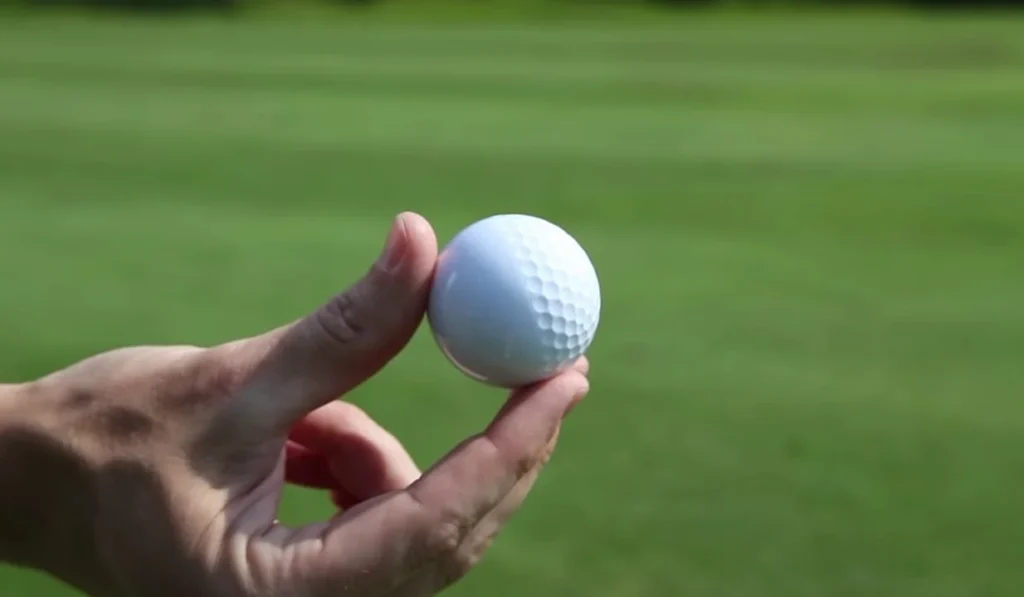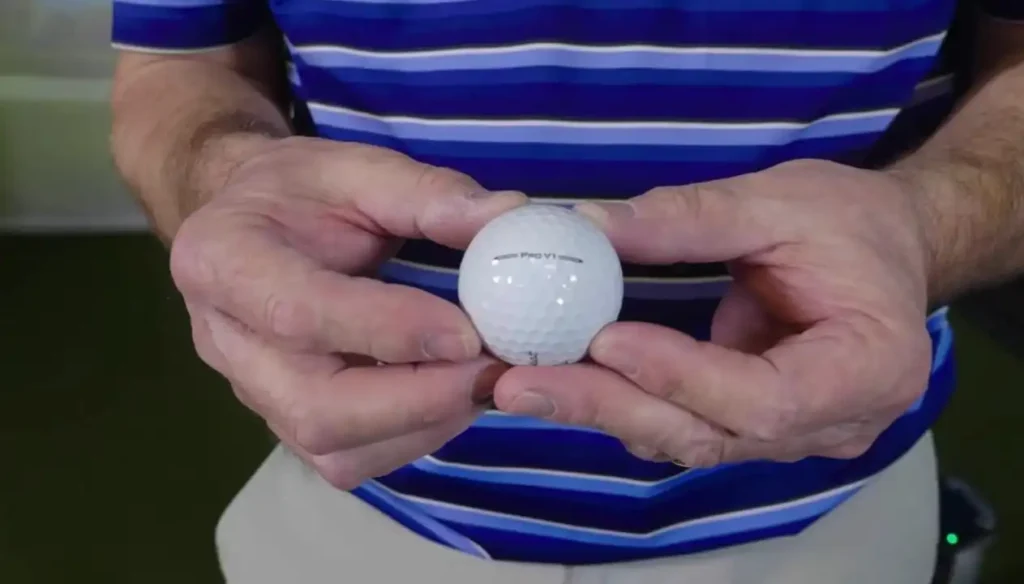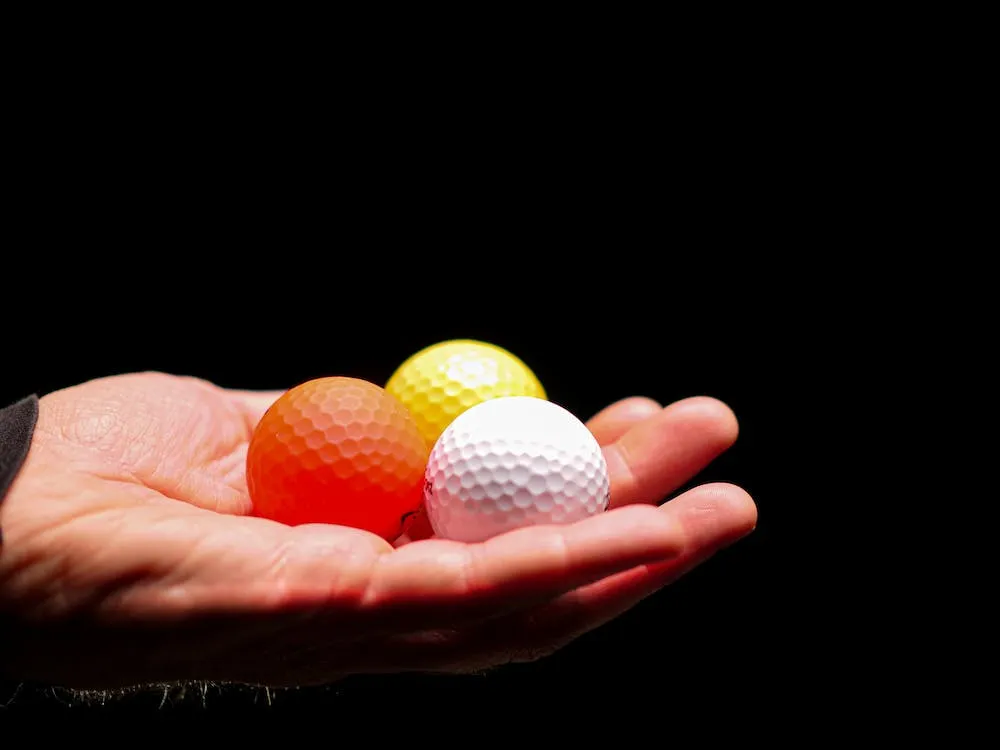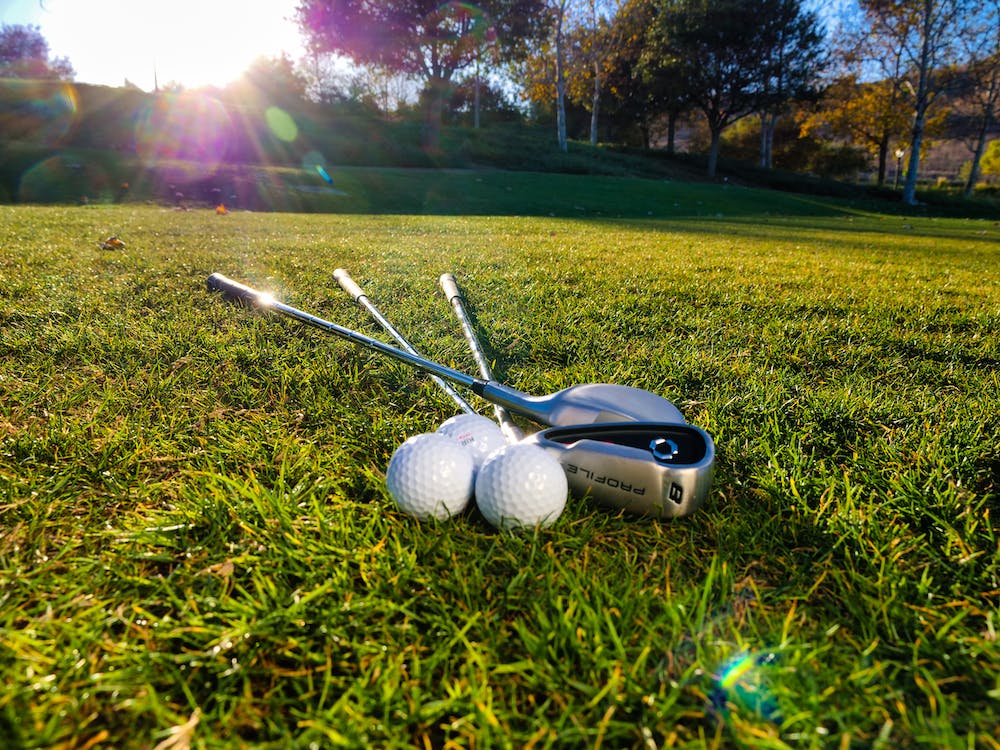In the world of golf, where precision and performance intertwine, the humble golf ball undergoes a fascinating transformation in its journey from tee to green. At the heart of this transformation lies a seemingly simple yet ingeniously designed feature i.e., dimples. These small, strategically placed indentations on the surface of a golf ball have a profound impact on its aerodynamics, dictating everything from trajectory to distance. That’s why this article will discuss the curious effect these dimples have on golf ball aerodynamics. We’ll compare traditional golf balls with a golf ball without dimples to help you understand why these indentations are necessary.
We’ve already written a few articles on Golfing Gimmicks on this topic. Golf balls didn’t have dimples on them from the very beginning; a simple search on Wikipedia will tell you that guys named David Stanley Froy, James McHardy, and Peter G. Fernie patented golf ball dimples for the first time in 1897, paving the way for a revolution in golf ball aerodynamics. How many dimples should there be on a golf ball’s surface? What if some balls have dimples on one side but are smooth on another side? We’ll discuss these questions briefly in this interesting read.

The Dimple Dilemma: Quantity vs. Quality
Conventional wisdom often links more dimples with improved golf ball aerodynamics, with their use leading to decreased drag and increased lift. But is reality in line with this belief or are there additional considerations involved with golf ball design that must be considered? Is adding more dimples the right way to improve the aerodynamics of a golf ball? What is the physics behind adding indentations to a golf ball? Let’s answer these questions and extinguish your thirst for knowledge.
Decoding the Dimple Dynamics
As is generally seen among golf balls manufactured today, dimple counts typically fall within 300 to 500. While manufacturers consider this range a standard one for performance enhancement purposes, is exceeding this range more effective? Can we significantly improve the aerodynamics of a golf ball by extending the number of dimples to 1,000?
The Law of Diminishing Returns
Studies indicate that dimple count and golf ball aerodynamics follow a law of diminishing returns with an initial rise in dimple count leading to enhanced performance. However, as more dimples are added, marginal gains become increasingly smaller while the count increases. So, adding more than 500 dimples will just make the ball travel a shorter distance and defeat the purpose of adding more dimples. That’s something you gotta bear in mind about golf ball aerodynamics.
Beyond the Numbers: The Quality Quotient
Not just quantity matters – depth and symmetry play an essential part. Deviations from ideal depth or symmetry may compromise aerodynamic efficiency, emphasizing its significance when designing dimples. That’s why 328 and 352 are some common options for the number of dimples on a golf ball, contributing a lot to the aerodynamics of a golf ball.
Navigating the Critical 55 mph Threshold
At speeds below 55 mph, both smooth and dimpled balls experience similar drag force experiences, however, at 55 mph there is a significant change i.e., dimpled non-spinning balls surpassing Reynolds number significantly reduce drag force to transform golf aerodynamics into reality. Speed combined with dimples become game changers. That’s what you gotta bear in mind regarding golf ball aerodynamics.
Shape Matters: Hexagons and the Art of Flight
Dimples don’t all behave the same when it comes to the aerodynamics of a golf ball. You must remember that hexagonally-dimpled balls exhibit higher lift coefficients and slightly reduced drag coefficients than their round-dimpled counterparts, opening up new possibilities for golfers seeking precision and control. That’s how you can improve golf ball aerodynamics.
Dimple Design: A Visual Symphony
Most golf balls feature between 300 to 500 dimples, significantly altering aerodynamics. While numbers alone do have some impact on aerodynamics, depth, and shape also play a part; aerodynamics is significantly affected if dimple depth exceeds standard depth or deviates from circular patterns. So, choosing the number of dimples in moderation is key to improving golf ball aerodynamics.
Golf Balls Dimple Between 300 – 600
We’ve discussed how dimples revolutionized golf ball aerodynamics in the previous century. Today, we have golf balls with a number of dimples, ranging from 300 to 600. How many dimples should you go for when buying a golf ball? This question worries even professionals sometimes. Are 600 dimples better than 300 dimples? Well, no! It’s just like asking: “Drinking water is healthy so shall I drink 100 cups a day?” Excess is always bad. When it comes to golf balls, manufacturers have to keep the dimple count to a reasonable number; experts believe that a sphere should have between 220 and 430n dimple. Adding any more dimples will counter their effect, making the golf ball perform poorly on the golf course.
Also, manufacturers can’t just fill the entire surface area of an orb with dimples. Experts would explain to you that a golf ball performs well when 80% of its surface area is covered with dimples. These dimples create a turbulent boundary layer around the ball, which delays the airflow from separating from the ball’s surface; they reduce drag and increase lift. More dimples will just be overkill; some guy tried to sell a golf ball with – you won’t believe it – 1,700 dimples. But it had to be discontinued, showcasing how fewer dimples are better. In this section, we have discussed a few golf balls with the dimple count ranging from 300 to 600. So, choose the one you find the best for your game:
| Wilson DUO Soft 302 dimples | More Information |
| Callaway Golf Supersoft Golf Balls (2023 Version) 332 dimples | More Information |
| VICE Pro Soft Golf Balls with 336 Dimple | More Information |
| Wilson Ultra 500 Straight Golf Ball, White with 432 diples | More Information |
| Chromax High Visibility Distance Golf Balls, 482 dimples | More Information |
| Mizuno RB 556 Golf Balls, 566 dimples | More Information |

Practical Implications for Golfers
We’ve discussed it many times and explained to you how choosing the right ball is vital for your performance on the green. Some balls are better for professionals while others are suitable for beginners. When it comes to golf ball aerodynamics, you gotta understand some of the practical implications of golf ball dimples for golfers, especially the newcomers to this sport. So, let’s talk about a few suggestions you should bear in mind about choosing the right dimpled sphere.
Choosing the Right Ball
Selecting the proper golf ball requires knowledge of dimple dynamics; golfers must carefully consider playing style, swing speed, and environmental conditions in selecting their ball to utilize all its potential. You must practice with different spheres to see which one promises the best aerodynamics of a golf ball.
Distance and Accuracy: The Dimple Advantage
Dimpled golf balls offer aerodynamic efficiency that directly leads to increased distance and accuracy on the golf course, giving those familiar with this technology an advantage over competitors who rely solely on non-dimpled alternatives. So, prioritizing golf ball aerodynamics is important when you consider distance and accuracy. Choosing a ball with 500 dimples may prevent you from hitting your target accurately.
Beyond Random Numbers: Why 336?
336 dimples may seem random at first, but their formation resulted from careful calculations using the principles of golf ball aerodynamics and empirical testing. Golf ball manufacturers strive to find an equilibrium point that optimizes lift while simultaneously decreasing drag. They look for solutions that optimize lift while decreasing drag for improved overall performance. So, they cater to offering the aerodynamics of a golf ball properly.
Striking a Harmonious Density
Dimple density – measured by the number of dimples – plays an integral part in aerodynamic efficiency. So, the number 336 strikes an effective balance, creating enough turbulence within the boundary layer without creating excessive drag; this harmony ensures you achieve the desired lift and distance without losing control. Remember that a lot of dimples placed close together will result in a far different result than the same number of dimples placed apart from each other. So, pay close attention to dimple density and its effect on golf ball aerodynamics.
Why Do Some People Use A Smooth Golf Ball?
A golf ball without dimples is a rare and unconventional choice in the golfing world. Dimples on golf balls are a critical component that significantly influences golf ball aerodynamics and overall performance, as we’ve just seen. The primary purpose of dimples is to enhance the lift, reduce drag, and optimize the flight characteristics of the ball. So, why do some golfers like using a smooth golf ball with no indentations?
Golf balls without dimples do exist, but they are not commonly used in standard play. The absence of dimples dramatically alters the aerodynamics of the ball, resulting in decreased lift and increased drag. As a consequence, a smooth-surfaced ball cannot achieve the same distance and stability in flight as its dimpled counterparts. Some experts claim that a smooth golf ball flies half the distance of a normal one.
In the realm of golf equipment, innovation and experimentation are ongoing. Some amateurs and children like to play with a golf ball without dimples so they don’t have to be worried about losing the damn thing on a large ground. Some examples of these balls include the very famous Caesar “Featherie”, a golf ball smooth like an egg. It doesn’t provide any golf ball aerodynamics but is fun to play with, especially when practicing in your house.

Conclusion
As we draw the curtain on the exploration of how dimples revolutionize golf ball aerodynamics, it becomes clear that there’s more to these small indentations than meets the eye. The intricate dance of air currents, lift, and drag that takes place around those dimples is nothing short of a masterpiece in engineering and physics. From enhancing lift to reducing drag, dimples play a crucial role in the flight of a golf ball, making the difference between an average shot and a spectacular one. So, the next time you stand on the tee, surveying the fairway ahead, take a moment to appreciate the unsung heroes—those tiny dimples that quietly, yet significantly, shape the trajectory of your golf ball. It’s a testament to the brilliance of design and the symbiotic relationship between science and sport that continues to evolve the game of golf.
Read this article to understand how many dimples on a Pro V1 golf ball are there: https://golfinggimmicks.com/dimples-on-a-pro-v1-golf-ball-are-they-important/
FAQs – Golf Ball Aerodynamics
1. Are more dimples on a golf ball better?
There’s a complex relationship between dimple count and performance. Although more dimples might increase aerodynamics, their optimal count depends on various factors relating to dimple size and arrangement. So, manufacturers carefully calibrate dimple counts on every ball model to obtain peak results.
2. How many dimples are there in a golf ball?
The dimple count on golf balls typically ranges between 300 to 500. Manufacturers conduct extensive testing and optimization processes to create shiny spheres with optimal aerodynamic properties, which impacts dimple count. It’s better to use a golf ball with a dimple count of less than 400 ( typically around 350).
3. Why do golf balls have dimples as per physics?
The golf ball design stems from golf ball aerodynamics. Dimples create an aerodynamic disturbance zone around their surface which reduces drag while expanding airflow attachment to its surface, improving travel distance and performance of a ball’s flight path. This science-backed mechanism maximizes the shiny orb’s performance.
4. Why are there 336 dimples on a golf ball?
336 dimples are chosen after extensive research and development to optimize aerodynamic efficiency by creating enough turbulence to decrease drag while keeping fluid dynamics unimpeded by any unnecessary interruption. Manufacturers make strategic decisions for peak performance using specific counts like this to achieve peak results.
5. Why do golf ball dimples make it more aerodynamic?
Golf ball dimples enhance golf ball aerodynamics by creating a turbulent boundary layer which reduces drag. This allows higher velocities and greater distance coverage, in essence, altering airflow around it to optimize aerodynamic performance. So, that’s the relationship between a golf ball’s aerodynamics and the number of dimples on it.











